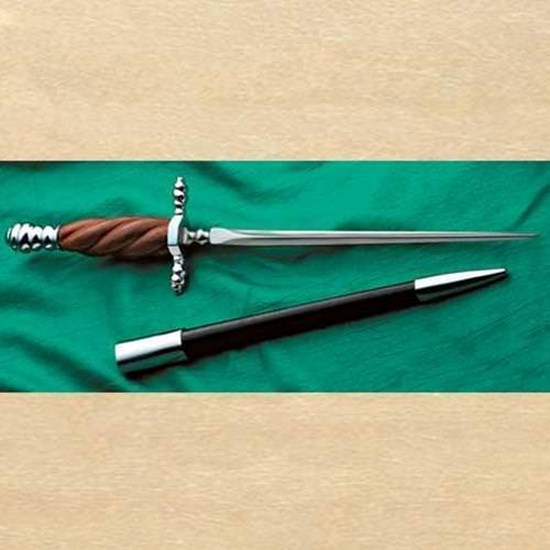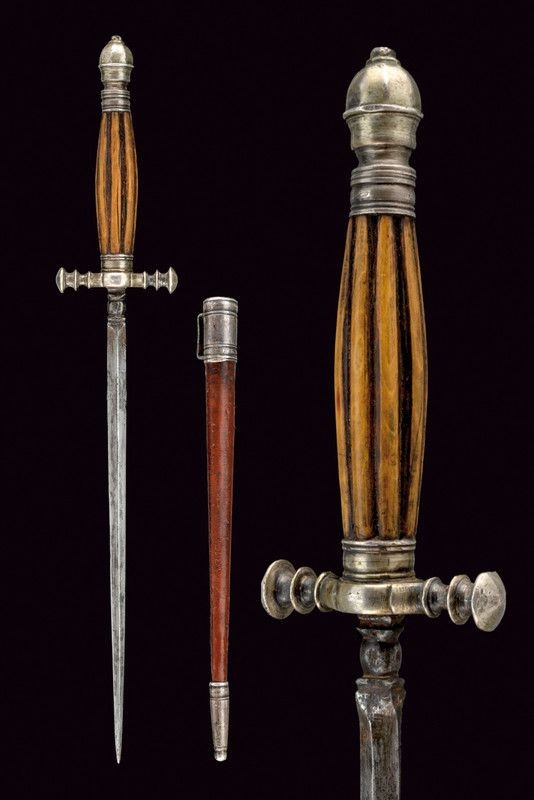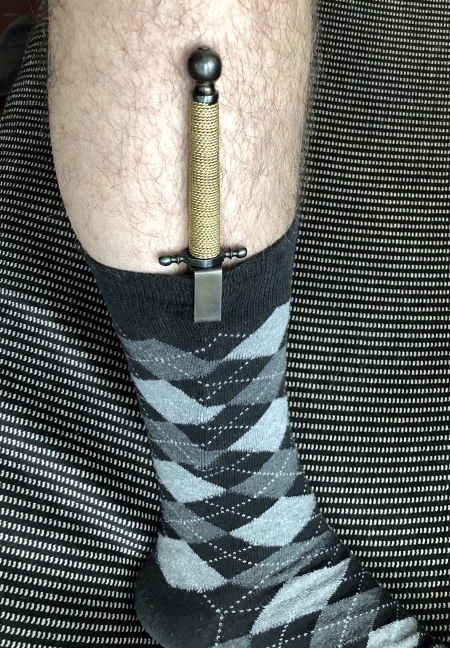my current hobby project (XVI-XVIIcc Italian Stiletto) is nearing completion. Hopefully I will be done with the stiletto this week, and ready to start on scabbard.
Just to show what type we are talking about, I attached a picture of a similar reproduction. Mine is different in details, but overall similar shape / size / construction (7-8" blade, 5" handle).
All I found after a lot of research on stiletto scabbards is that they are always as narrow as the blade (no wood lining). Either all-metal, or leather with metal chape and throat (which is what I will be doing).
The problem is none of the pictures of originals I found show the back side, so no means of suspension / attachment are visible.
The only period picture I found of this type being worn (in Bashford Dean's daggers) shows it at the small of the back, almost horizontal with handle to the right. Basically like most landsknecht or parrying daggers of the period. But those naturally have belt loops soldered to the back of the scabbard throat, perpendicular (or almost perpendicular) to the blade. On a narrow stiletto scabbard, there is just not enough width to fit one! Maybe the picture isn't accurate enough and the scabbard is actually stuck under the belt. Or shows a wider dagger with a similar handle.
I also read that stilettos may have been carried concealed (I imagine like under clothes, in boot top, stuck under belt, etc.). For this kind of carry, no attachment points would be necessary at all. But then maybe this applies more to the smaller all-metal stiletto type?
As to suspension by cord/thong, I don't think it would work at all as with their light blades stilettos would end up dangling handle down...
So, any thoughts on this matter?
Have you seen any stiletto scabbards from the back? Or can point me to any period artwork showing them worn?
Thanks.
Alex.


